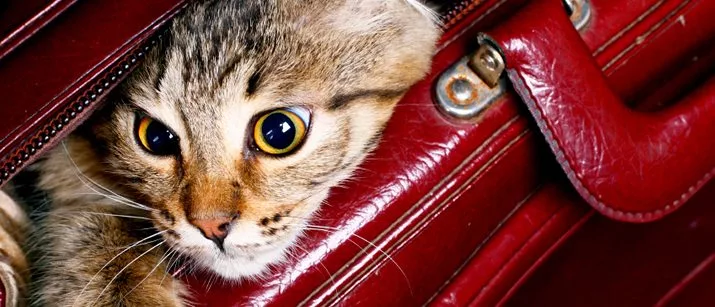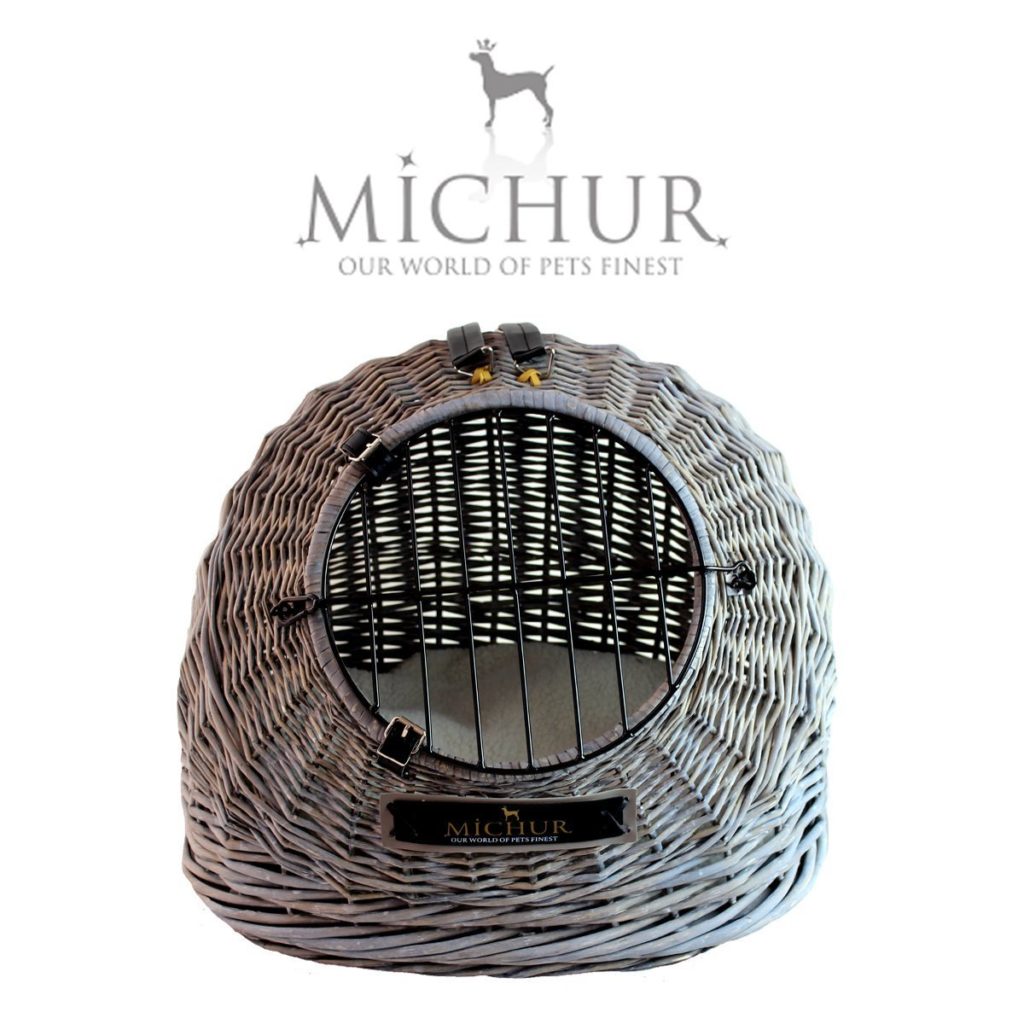0

22 May Traveling With Your Cat or Kitten
Even if you never plan on taking a trip with your cat there will still be plenty of times that you need to transport your cat. These tips can make even a trip to the vet an easier process.
Choose a Carrier:
Choosing the right cat carrier will help a lot. There are several types to choose from and all have pros and cons. Just make sure that it’s big enough to hold your cat and that you fit the inside with some comforts like a towel or blanket.
Cardboard Box Carrier: If you plan to only travel to the vet with your cat then you could choose a cardboard box type carrier. These are inexpensive and fold for easy storage. However, if there is ever an accident in the box it will have all but been destroyed.
Vinyl Carrier: The vinyl carrier is a lot more sturdy then the cardboard box carrier and will also fit into small areas for storage. They typically have two handles making for easy carrying. They also have a vinyl window and ventilation holes.
These are good for public transportation as they are not as space consuming or clumsy as their fibreglass, plastic and wicker counterparts.
The downfall to these is that they will not last as long as the more expensive fibreglass, plastic and wicker carriers and they will not typically be allowed for use when showing your cat or traveling by air.
Fibreglass Carriers and Plastic Carriers: These types of carriers are great for anyone who wants to show their cat or is planning on traveling for longer distances. Or, someone who just wants a better carrier.
Although more expensive then a cardboard or vinyl carrier, they have many features that may be worth the expense. They are very sturdy and have lockable doors with a metal (sometimes plastic) ventilation grille.
The cat will be able to see out the carrier very easily. Some even have clasps on the sides so the top comes completely off; this is great if your cat is reluctant to go in, or come out, of the carrier, or if it is ill. The major downfall is they do not collapse for easy storage, so if you are short on space you’ll want to consider where you will keep it when the carrier is not in use.
Wicker Carrier: Although the most attractive and most traditional, wicker carriers are also the most expensive. Something to consider before purchasing a wicker carrier is they can be very drafty, so if you live in a cooler climate you’ll need to fit it with some blankets or newspaper to keep your cat warm. They are also very hard to clean. They, like the fibreglass and plastic carriers, take a lot of storage space when not in use.

Michur-Cosma-Grey-Carrier-Cave-1
Practice Makes Perfect:
Taking practice runs with your cat is a great way to find out if your cat travels well. Typically if you start traveling with your cat when they are kittens you will have little to no troubles when they are adults.
Start with an introduction to the carrier. Doing so in a closed room is best, as it will keep the cat from running off and you having to chase it thru the house. You can try putting some cat food in the carrier but most likely you will have to physically put your cat into the carrier.
Start by taking a car trip around the block and gradually make the trip longer, or a bus ride for only one stop. If the cat does well the first time thru you’ll probably have no troubles later on. If at first the cat is reluctant, keep trying. Keep taking short trips and adding to the time traveled.
Many cats are not real happy about traveling and will complain constantly. This will be very annoying to the owner but will do no harm to the cat. It may be helpful to talk to your cat, reassure it, pet it thru the grille, etc. Eventually most cats will become adapted to traveling.
Don’t forget to take pit stops and allow your cat access to water, food, and a litter box if your practice runs last more then 30 minutes. If you are going to let the cat out of the carrier on pit stops you’ll want to get a harness and leash. Otherwise make sure all windows and doors are closed so the cat won’t have an opportunity to escape.
When all Else Fails:
If after several attempts at practice runs you still can’t tolerate traveling with your cat, you may want to consult your veterinarian. They can prescribe a sedative, usually in pill form, that you give your cat prior to traveling, it will not render your cat unconscious but will help to relax your cat.
However, there is a lot of controversy over this topic so make sure to talk over the pros and cons with your veterinarian.
